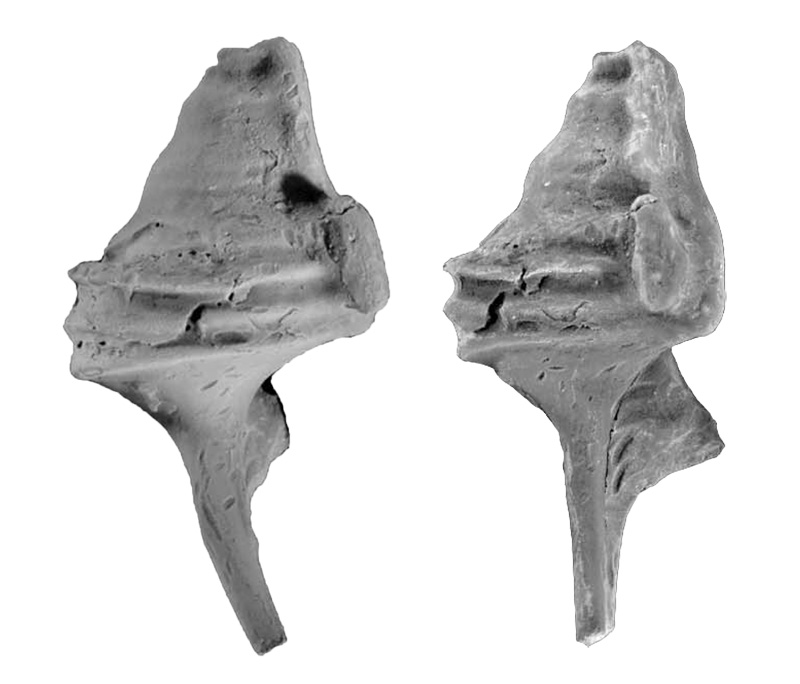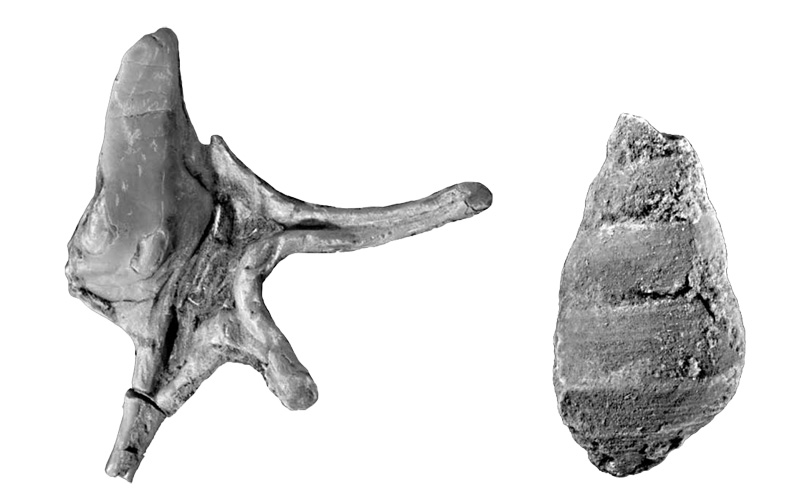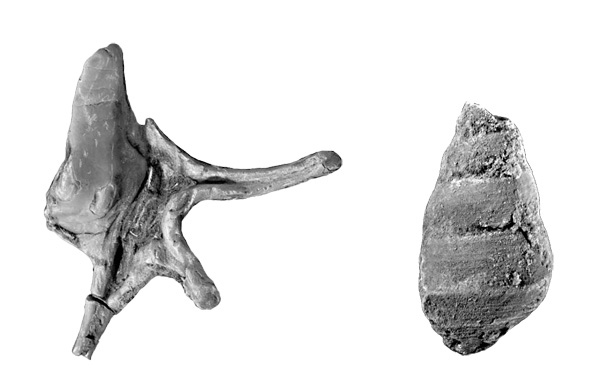Stromboidea
Original Diagnosis of Tessarolax alaskana by Saul & Squires, 2015:
- ”Mature last whorl strongly tricarinate; callus glaze thin on dorsum, thicker on venter; fictavarix short and laterally flangiform.”
Original Description of Tessarolax alaskana by Saul & Squires, 2015:
- "Shell up to 39 mm high and 20 mm wide (missing digitations). Pleural angle 47 degrees. Protoconch unknown. Teleoconch consisting of at least five whorls (tip missing). Suture slightly impressed. Immature shell: Turriculate, consisting of approximately four whorls, early spire whorls unicarinate and finely ribbed; later spire whorls with three (possibly four?) spiral ribs, all equally moderately strong, closely spaced, and weakly noded. Mature shell: Consisting of last whorl, having three strong closely spaced spiral ribs, plus one weaker spiral rib located posteriorly; neck and base of last whorl smooth. Aperture moderately narrow. Outer lip expanded into four canaliculate digitations. Apical digitation adhering to spire, except in tip area. Callus light on dorsum, thicker on venter, and extending onto spire. Fictavarix short and flange-like."
Locus typicus: Hicks Creek, southeastern Talkeenta Mountains, southern Alaska, USA
Stratum typicum: lower Matanuska Formation, upper Turonian or lower Coniacian, Cretaceous
Geographic Range: Southern Alaska to southern California, USA.
Etymology: Named for the state of Alaska, from which the holotype was collected.
Tessarolax alaskana Saul & Squires, 2015; Holotype; lower Matanuska Formation, upper Turonian or lower Coniacian, Cretaceous; Hicks Creek, southeastern Talkeenta Mountains, southern Alaska, USA; 37 mm; Coll. LACMIP no. 13576; Copyright Natural History Museum of Los Angeles County.
Tessarolax alaskana Saul & Squires, 2015; Copyright Natural History Museum of Los Angeles County.
- Left: Paratype; Budden Canyon Formation, Gas Point Member, Turonian or Coniacian, Cretaceous; Roaring River, Ono, Shasta County, California, USA; 34 mm; Coll. CAS no. 278620.
- Right: Paratype; Tuna Canyon Formation, upper Turonian, Cretaceous; Rustic Canyon-Temescal, Canyon devide, Santa Monica Mountains, Los Angeles County, California, USA; 10.5 mm; Coll. LACMIP no. 13577
Tessarolax alaskana Saul & Squires, 2015; Copyright
Natural History Museum of Los Angeles County.
- Left: Paratype; Budden Canyon Formation, Gas Point Member, Turonian or Coniacian, Cretaceous; Roaring River, Ono, Shasta County, California, USA; Coll. CAS no. 27862.01
- Right: Paratype; Tuna Canyon Formation, upper middle Campanian, Cretaceous; Santa Ynez Canyon, Santa Monica Mountains, Los Angeles County, California; Coll. LACMIP no. 13577
References:



